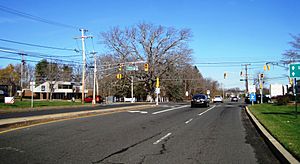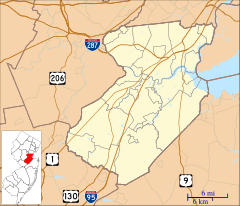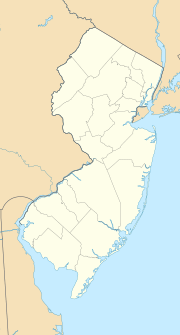Prospect Plains, New Jersey facts for kids
Quick facts for kids
Prospect Plains, New Jersey
|
|
|---|---|

|
|
| Country | |
| State | |
| County | Middlesex |
| Township | Monroe |
| Elevation | 128 ft (39 m) |
| GNIS feature ID | 879505 |
Prospect Plains is a small, unincorporated community. It is located within Monroe Township in Middlesex County, New Jersey. An unincorporated community is like a neighborhood or area that is part of a larger township, rather than being its own separate town. You can find Prospect Plains where two main roads, Prospect Plains Road and Applegarth Road, meet. Along these roads, you'll see different shops and businesses. There are also some houses clustered near where the old Camden & Amboy railroad line used to cross Prospect Plains Road.
Exploring Prospect Plains, New Jersey
Prospect Plains is a unique place with a mix of modern businesses and interesting history. It's a great example of how communities grow and change over time.
The Famous Monroe Oak Tree
One of the most special things about Prospect Plains is the Monroe Oak. This huge white oak tree was already standing when Monroe Township was first created in 1838! Imagine how old that tree must be.
For a while, there were plans to build a gas station right where the tree stood. But people in the community worked hard to save it. Because of their efforts, the Monroe Oak was preserved. It has now become the official symbol of Monroe Township. This shows how important nature and history are to the people living there.
A Look Back at Prospect Plains' Past
Prospect Plains has a rich history. It was once home to a railroad station on the Camden & Amboy Railroad. This railroad was very important for travel and trade a long time ago.
The community also had a one-room school house. This was where children in the area would go to learn, all together in one classroom. For many years, the township's main office was also located in Prospect Plains. This means it was a central spot for local government and community activities.




